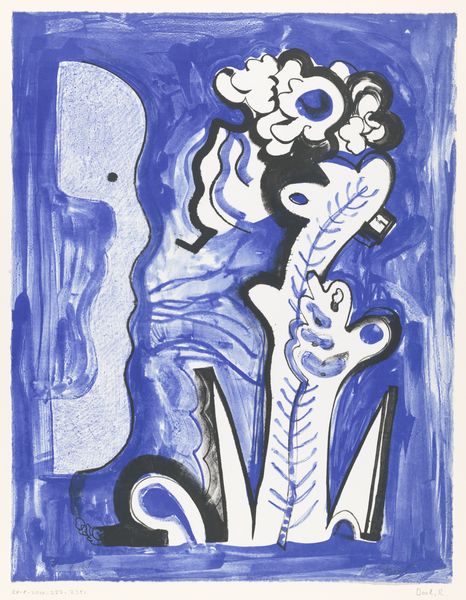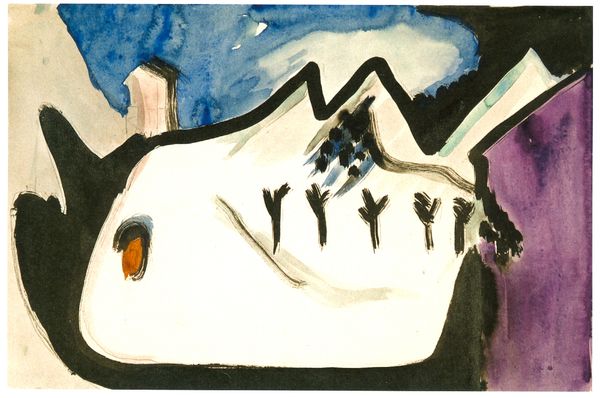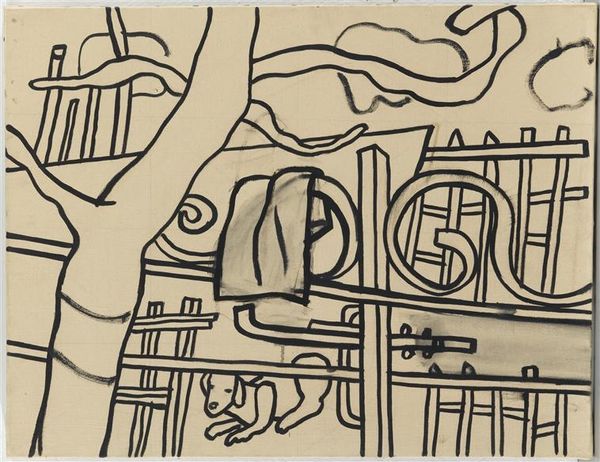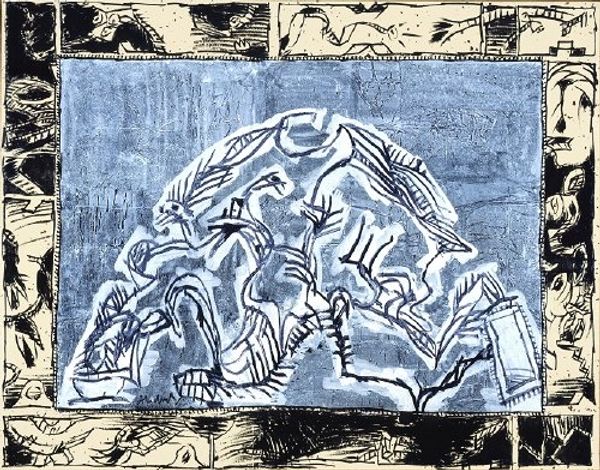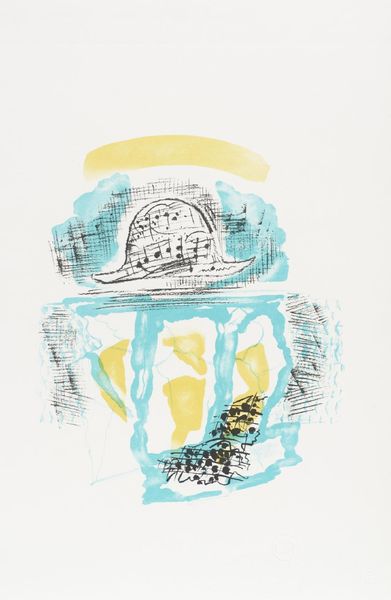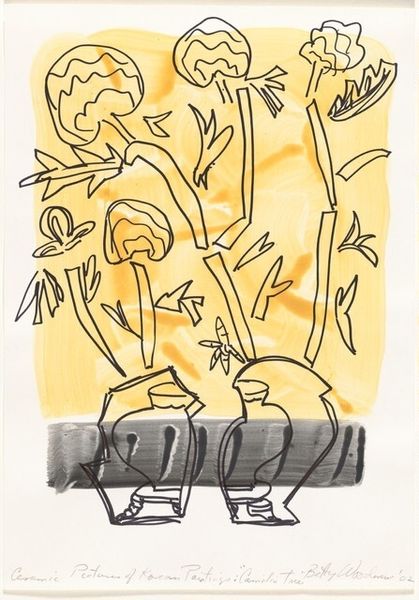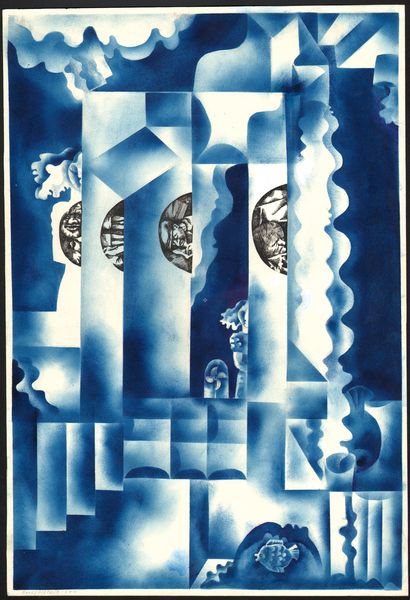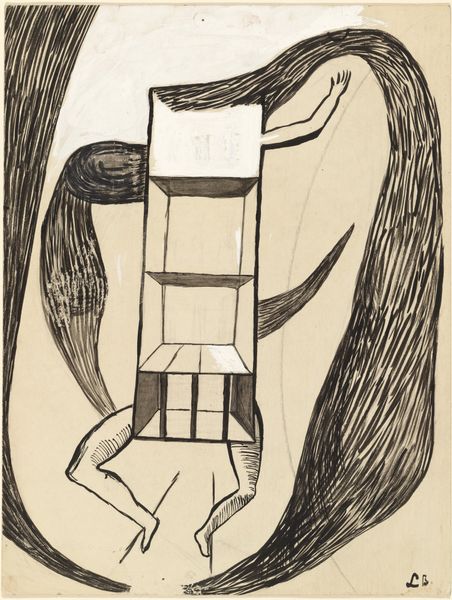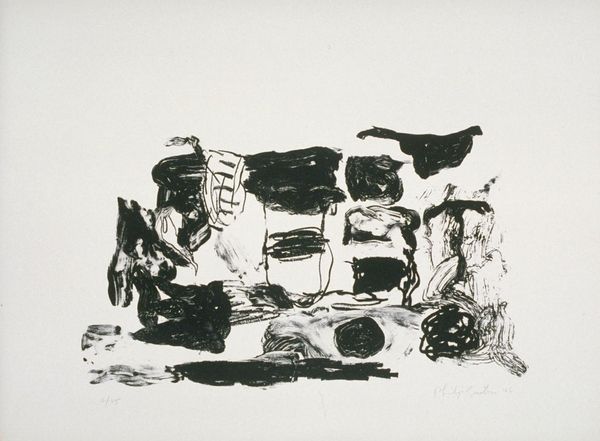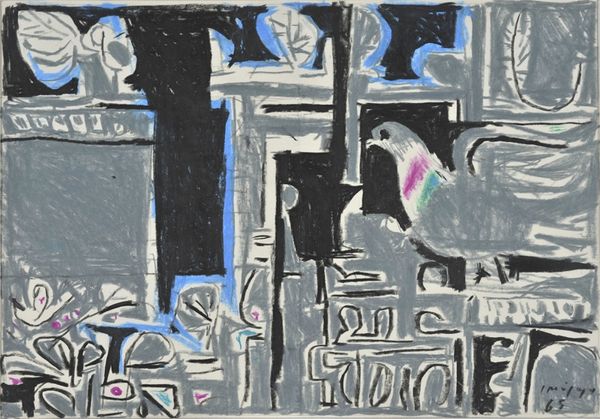
graphic-art, print
#
graphic-art
#
quirky illustration
#
childish illustration
#
cartoon like
#
cartoon based
# print
#
caricature
#
junji ito style
#
cartoon sketch
#
personal sketchbook
#
abstraction
#
cartoon style
#
cartoon carciture
#
modernism
Dimensions: height 655 mm, width 508 mm, height 655 mm, width 508 mm
Copyright: Rijks Museum: Open Domain
Curator: Let's consider Rein Dool's "Wijzend figuur," dating from 1943 to 2009, here at the Rijksmuseum. What's your immediate take? Editor: It feels playful yet unsettling. The harsh lines combined with the almost childlike forms give it a really strange dynamic tension. The monochrome against that vibrant blue... it just pulls you in. Curator: Dool often engaged with abstraction after the war. Notice the way the figure points, almost accusingly, within this broader context of post-war anxiety and re-evaluation. There's a definite unease that many felt questioning what had just occurred within a societal perspective, yes? Editor: Absolutely, but that accusation isn't just thematic. The direction of the lines, their sharpness, all focus attention; look how that right eye peeks, unsettling but intriguing... like he sees everything that passed through WWII... from that, I mean this focus creates this discomfort! How the abstraction and flatness interact to make that character. Curator: Interesting, because this image challenges notions of conventional portraiture and also engages more with modern ideals during and after WWII where there's a push and pull between these ideals of reality, but using caricatures that you mentioned previously to represent reality versus conventional ideals. Editor: The caricature allows a degree of commentary, but then what is reality versus artificial constructs, yes? It asks questions of how art depicts society. And its style, while 'cartoonish,' speaks to a conscious manipulation of form and expectation. Curator: That rings true; it allows an opening to discuss the human condition—how historical factors often influenced it, and in doing so it brings us closer to understanding this figure from a humanistic perspective. It almost reminds one of Daumier's lithographs critiquing French society. Editor: A fair comparison, yes! The gestural qualities enhance its presence. Curator: Agreed, there is great strength in what otherwise would look like the 'simple' rendering, but it is so powerful when you delve deeper into art history of war. Editor: So there's so much contained within something that at first glance may appear simple, like children's drawings.
Comments
No comments
Be the first to comment and join the conversation on the ultimate creative platform.
